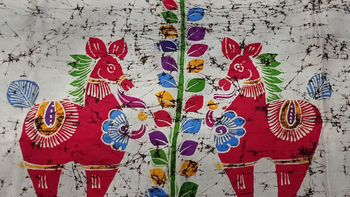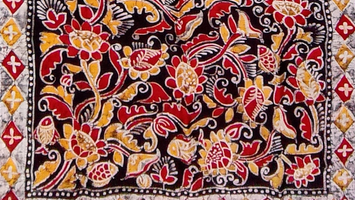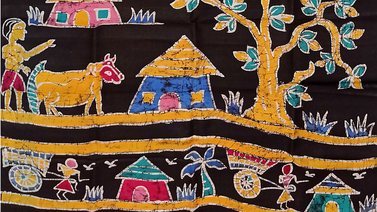Reviving craft of Hand Batik
artisan upliftment through market linkages

Silks of India
India is the second largest natural silk producer in the world and produces 4 types of natural silks. Mulberry Silk - The bulk of the commercial silk produced in the world comes from this variety and often silk generally refers to mulberry silk. Tasar Silk - Also know as Tussah. It is copper colour, coarse silk mainly used for furnishings and interiors. It is less lustrous than mulberry silk. Eri Silk - It is a multivoltine silk spun from open-ended cocoons, unlike other silk. Muga Silk - It is golden yellow colour silk and the pride of Assam.

Hand Batik
Batik is a technique of wax-resist dyeing applied to the fabric. It is an elaborate process that involves coating sections of the fabric in wax, soaking the fabric in vivid colors, letting it dry and thereafter removing the wax by boiling the cloth. This is repeated multiple times depending on the design. Hand batik is practiced in some parts of West Bengal. We are trying to promote hand batik sarees by standardizing product attributes, assuring quality and creating contemporary designs. The intended market creation will benefit artisans practicing this art form and encourage them to revive it.

Bishnupur Silk
Bishnupur is in Bankura District of West Bengal. It is around 130 kms from Kolkata. This town is famous for silk and terracotta work. The famous Baluchari sarees are made here. Bishnupur silk is made from Mulberry Silk yarns. It differs from Murshidabad silk in the way it its weaved. Unlike Murshidabad silk, Bishnupur silk is weaved with dyed yarns. This gives the extra shine and weight to the finished fabrics. But this also increases the weaving time required to weave a same length of Murshidabad silk fabric. We use Bishnupur silk fabric for our sarees.
NO Minimum Order Quantity for custom designs in Hand Batik sarees
Boutiques, Private Labels and Brands contact us to discuss your requirements